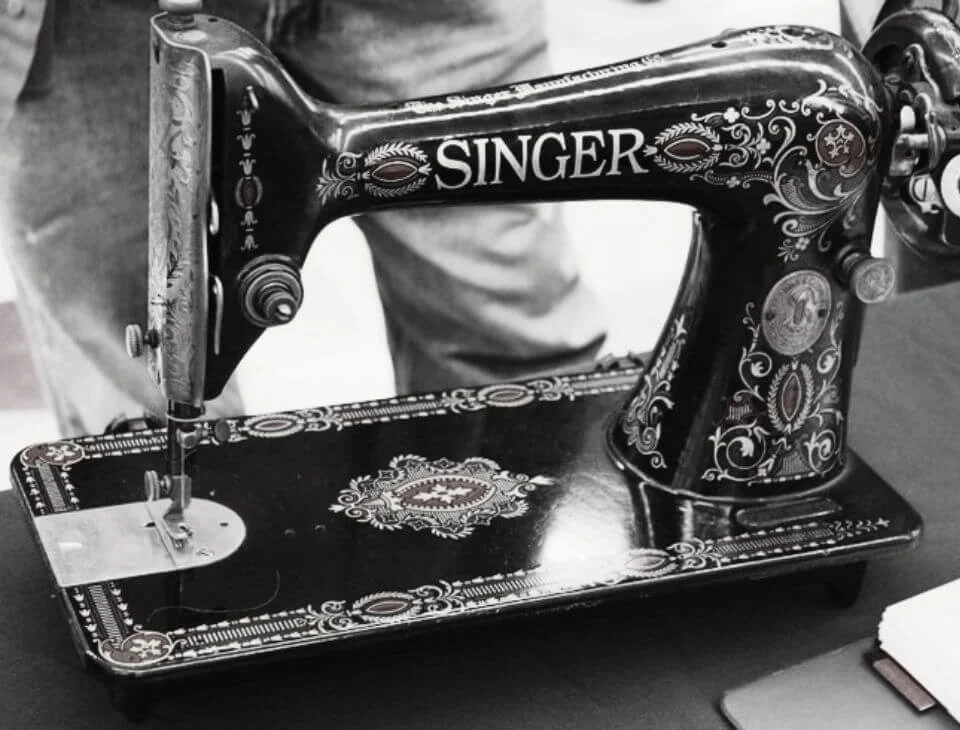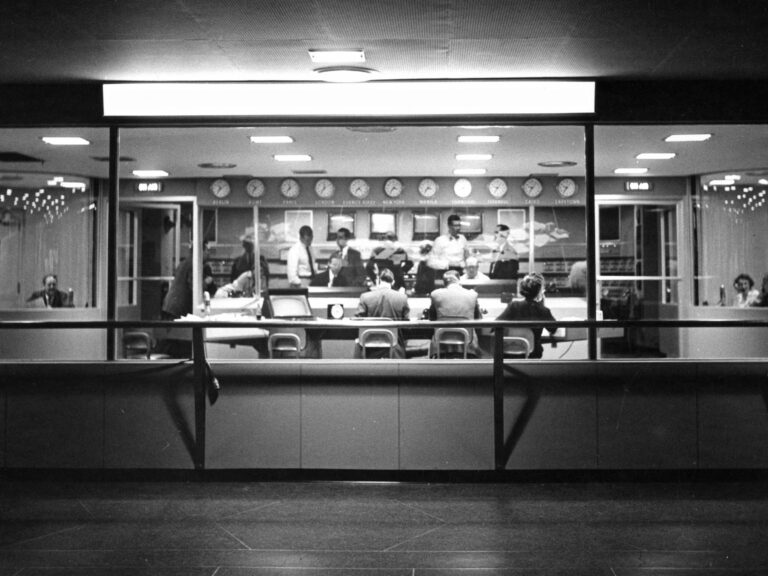Singer Sewing Machine History: The Evolution of Craftsmanship
The enduring legacy of the Singer Sewing Machine is deeply embedded in the fabric of history. From its humble beginnings to its constant evolution, the history of Singer Sewing Machines is a story of innovation and resilience.
The following key points will trace the fascinating journey of the Singer sewing machine throughout history:
- The Genesis: Isaac Merritt Singer – This is where it all began, when Isaac Merritt Singer invented the first practical sewing machine.
- First Success: The Singer Sewing Machine – The first Singer sewing machine was a significant success and marked a pivotal point in sewing technology.
- Kilbowie, Clydebank: Main Factory – This Scottish town served as the heart of Singer’s manufacturing, producing millions of machines.
- Expansion: Elizabethport, NJ and Beyond – Singer continued to grow, setting up new factories across the globe.
- Singer Sewing Machine Models: 1885-Today – Over the years, Singer has introduced numerous models, reflecting changing times and consumer needs.
In tracing the history of Singer sewing machines, it’s clear that this brand has left an indelible mark on the industry.
A Closer Look at the Evolution of Singer Sewing Machines
Isaac Merritt Singer’s first invention revolutionized an entire industry, making sewing more accessible to households worldwide.
Singer’s expansion beyond Elizabethport, NJ symbolizes its global reach and influence.
The wide variety of models introduced by Singer since 1885 reflects its commitment to innovation and meeting customer needs.
To this day, Singer continues to be a trusted name in sewing machines, honored and loved by generations.
Contents
- The Genesis: Isaac Merritt Singer
- First Success: The Singer Sewing Machine
- Kilbowie, Clydebank: The Main Factory
- Expansion: Elizabethport, NJ and Beyond
- Singer Sewing Machine Models: 1885-Today
- Compiling List of Singer Sewing Machines
- Miscellaneous: Missing Singer Models
- Singer’s Eleventh Hour: Today’s Singers
- Stitching Through Time
The Genesis: Isaac Merritt Singer

Isaac Merritt Singer, born on October 27, 1811, was an inventor and businessman.
Born and raised in Pittstown and Oswego, New York respectively, Singer ventured into the world at a young age.
With only a basic education, he held a number of odd jobs as an unskilled worker before taking up an apprenticeship as a mechanic.
Singer’s passion for acting led him to form a troupe known as the Merritt Players. Despite having numerous children due to his promiscuous lifestyle while touring, Singer held onto his inventive spirit.
His initial patents included a rock-drilling machine and a wood-and-metal carving tool. After an explosion destroyed his factory, Singer found work repair sewing machines.
During his stint as a repairman, he discovered an opportunity to design a superior model to those available at the time. His design was innovative in its ability to continuously sew any part of an object and even in curves.
Singer’s sewing machine could produce 900 stitches per minute thanks to his design of the presser foot.
Despite complications with patent rights, this didn’t stop Singer from further developing his machine. After partnering with Edward Clark in 1857, I.M. Singer & Company was established.
The company set up a mass-production facility in New York where they manufactured parts for their sewing machines. This allowed them to sell their machines at affordable prices to households nationwide.
In the span of three years, I.M. Singer & Company expanded to three additional plants and soon became the largest sewing machine manufacturer globally.
The duo incorporated under the name Singer Manufacturing Company in 1863. At this point, the company had amassed 22 additional patents, including an overseas factory in Glasgow, Scotland.
Singer retired in 1864, a well-earned break after years of hard work and innovation. The impact of his inventions, coupled with his clever business acumen, had a profound effect on domestic tasks and the clothing industry.
Isaac Singer passed away, a multimillionaire, on July 23, 1875. His legacy has left an indelible mark in the world of manufacturing and invention. For more detailed information about Isaac Singer’s life and works, you can read his biography.
First Success: The Singer Sewing Machine

The unparalleled story of Isaac Merritt Singer, creator of the iconic sewing machine, bristles with breathtaking feats and grand achievements.
Singer’s ingenious invention catapulted him from obscurity to affluence, leaving an indelible mark on the 19th-century manufacturing landscape.
Singer’s Centennial Celebrations
In 1951, Singer commemorated its centenary in the sewing business by producing a unique badge. For a year it graced every Singer machine produced.
This badge was not only a symbol of achievement but a testament to the manufacturer’s devotion to quality and innovation.
Evolving Singer Models
In the 19th century, Singer machines evolved at an unhurried pace with newer models replacing obsolete ones in a sequential manner.
However, from the mid-20th century onward, there was an uncontrolled eruption of Singer models due to technological advancements and expanding global markets.
‘Sewalot’, a comprehensive guide on singer sewing machines, offers a deeper exploration into the life and contributions of Isaac Singer. With each iteration, Singer continued to refine and reinvent their machines, making them more sophisticated and user-friendly.
Singer’s Legacy Endures
The name Singer became synonymous with sewing machines globally. His invention revolutionised garment manufacturing and home crafting alike.
Despite the introduction of modern sewing machines that are virtually automatic, many still cherish traditional Singer models for their unmatched quality and workmanship.
Kilbowie, Clydebank: The Main Factory

Your curiosity might take you to Kilbowie, Clydebank where Singer set up its main factory. This was not just a factory; it was the beating heart of Singer’s operations.
At its peak, you would have seen an astonishing 7,000 employees bustling between the walls of Singer’s main factory in Kilbowie. It was an iconic and impressive sight.
The Monumental Sewing Machine Factory
The factory was renowned, with a clock tower that stood tall and proud, visible from far and wide. The tower boasted four faces, each one larger than London’s Big Ben.
It wasn’t just for show though. This factory was responsible for producing a significant portion of the world’s sewing machines during Singer’s height.
Imprint on Clydebank’s Identity
Singer didn’t just choose Clydebank randomly. The area had a rich heritage of engineering excellence which aligned with the standards Singer strived for.
However, the factory didn’t only mold sewing machines but also shaped Clydebank’s identity. It was part of their heartbeat, their lifeblood.
The Factory Today
Clydeside Images provides insight into what remains of this industrial titan today. Though it isn’t as glorious as it once was, the factory is still a symbol of a time gone by.
Even now that Singer has moved on, they’ve left an indelible mark on Clydebank that won’t soon be erased.
Expansion: Elizabethport, NJ and Beyond

Elizabeth, NJ harbors a rich history. It’s characteristically remembered for being the first English-speaking community in New Jersey. It’s also where the Revolutionary War found strategic success, largely due to its waterways.
The Industrial Revolution
Notably, during the industrial revolution, Elizabeth became a site for technological breakthroughs. Singer Sewing Machine Manufacturing Co. chose this city for their plant in 1873.
Spanning 32 acres, it employed more than 6,000 people, becoming the world’s largest workforce in the 1870s.
Singer’s Mark on Elizabeth
Singer was the heart of Elizabeth’s economy for a century. It introduced many patented inventions and achieved international recognition.
Elizabeth also witnessed the first assembly line automobile production at the Durant factory.
Other Notable Firsts
The city saw other industry leaders as well such as Chrysler and William Crapo Durant.
The U.S. Navy’s first commissioned submarine, USS Holland, was built at Elizabeth’s Lewis Nixon Crescent Shipyard.
This city served as the original home to Princeton University, founded in 1746.
The first ice cream soda was invented here by resident Philip Mohr.
Singer Sewing Machine Models: 1885-Today
The Singer Vibrating Shuttle machine, produced in 1885, marked a significant development in sewing technology.
This model, known as the VS 2, was followed by the Model 27, increasing versatility and ease of use.
The iteration process continued with Models 127, 3, and the automatic Model 24.
Then came Models 28 and 128, each one enhancing previous features and usability for users like you.
| Model | Year Introduced |
|---|---|
| VS 2 | 1885 |
| Model 27 | TBC |
| Model 127 | TBC |
| Model 3/24 (Automatic) | TBC |
| *TBC = To Be Confirmed | |
This noteworthy lineage takes us through the evolution of Singer’s craftsmanship.
Models like the Model 20 Miniature were engineered for your specific needs.
In addition are models like the Model 30 Chain Stitch and Model 48 K Transverse Shuttle.
The Singer company didn’t stop there. They introduced the classic Model 66, followed by the compact Model 99.
The Featherweight series brought about another revolution with Models 201 Featherweight 221 and Featherweight 222K- the epitome of portability.
Beyond sewing machines, Singer’s expansive product range includes embroidery machines, sergers, digital projection systems, and cutting machines.
These offerings cater to your every sewing requirement, showing Singer’s commitment to meeting your needs.
Compiling List of Singer Sewing Machines

How Can You Identify Different Singer Sewing Machine Models?
Singersewinginfo.co.uk provides a photo gallery to assist you.
This online resource is an essential tool for determining the model of your machine.
The use of images with model details enhances identification accuracy.
Are The Images Helpful In Identifying The Models?
Yes, indeed! Images are usually worth a thousand words.
Underneath some photos, you might find dotted lines.
Click on these lines to access additional information about that specific model.
What Information Can These Details Provide?
This information serves as an educational resource.
It helps users make informed decisions about their Singer sewing machines.
This data also forms a solid foundation for further research or inquiries.
How Does This Contribute To User Experience?
This approach promotes a clear and concise user experience.
It enhances efficiency and contributes to self-learning and knowledge acquisition.
In this manner, value and relevance are delivered to users.
Miscellaneous: Missing Singer Models

At times, you may encounter missing data on specific Singer sewing machine models. You’re not alone.
These gaps aren’t uncommon. Let’s delve further into this mystery together.
Often, these ‘missing’ models are simply lesser-known or rare, making them difficult to find information on.
| Model Number | Year of Manufacture | Estimated Rarity |
|---|---|---|
| Series 6BH | 1900-1920 | Rare |
| Model B7 | 1922 | Semi-Rare |
| E98 Series | 1931-1933 | Rare |
| F1 Variety | 1948-1950 | Rare |
| C9 Model line | 1955-1960 | Hard to Find |
| Source: Online Auctions & Private Collections | ||
The above table depicts some of the elusive Singer models that often slip through the cracks.
A few Singer models had short production runs, which explains their scarcity and lack of data.
You can use online auctions or private collections to locate information on these elusive models.
It’s a great way to find out what’s out there and potentially nab a rare model for your collection.
Becoming knowledgeable about the lesser-known models can up your game as a collector or hobbyist.
Remember, not all Singer models are well-documented, but the hunt makes it all the more exciting.
Singer’s Eleventh Hour: Today’s Singers
You might not know this, but the Eleventh Hour Trio is a Southern Gospel group with immense versatility. They lead worship and have made quite a name in the music scene.
Believe it or not, these talented musicians have notched up several Top 10 hits on Singing News. Their mellifluous harmonies and stirring melodies have resonated with many, earning them multiple award nominations.
- Amber Eppinette Saunders, one of the lead vocalists, received a nomination for Soprano of the Year.
- Garrett Saunders and Victoria Bowlin, round out the trio, each lending their unique flair to the group’s sound.
- Their album was also nominated for AGM Album of the Year, further testament to their talent.
Their music is a remarkable blend of traditional Southern Gospel and modern-day vibes. This fusion has worked in their favor, appealing to a diversified audience.
Their faith and passion shine brightly through their performances. Whether they’re on stage or off, they’re always ready to share the Good News of Jesus.
They believe in spreading love and hope through their ministry and music. It’s clear that they follow their hearts and trust where God guides them.
Stitching Through Time
The Singer Sewing Machine’s history exemplifies innovation in craftsmanship, shaped by changing societal needs and technological advancements. From its inception in 1851, the machine revolutionized the textile industry, improving productivity and transforming home sewing. Over the years, Singer has maintained resilience and adaptability, embracing modernization while preserving its heritage, thereby continuing to be a key player in the sewing industry.










